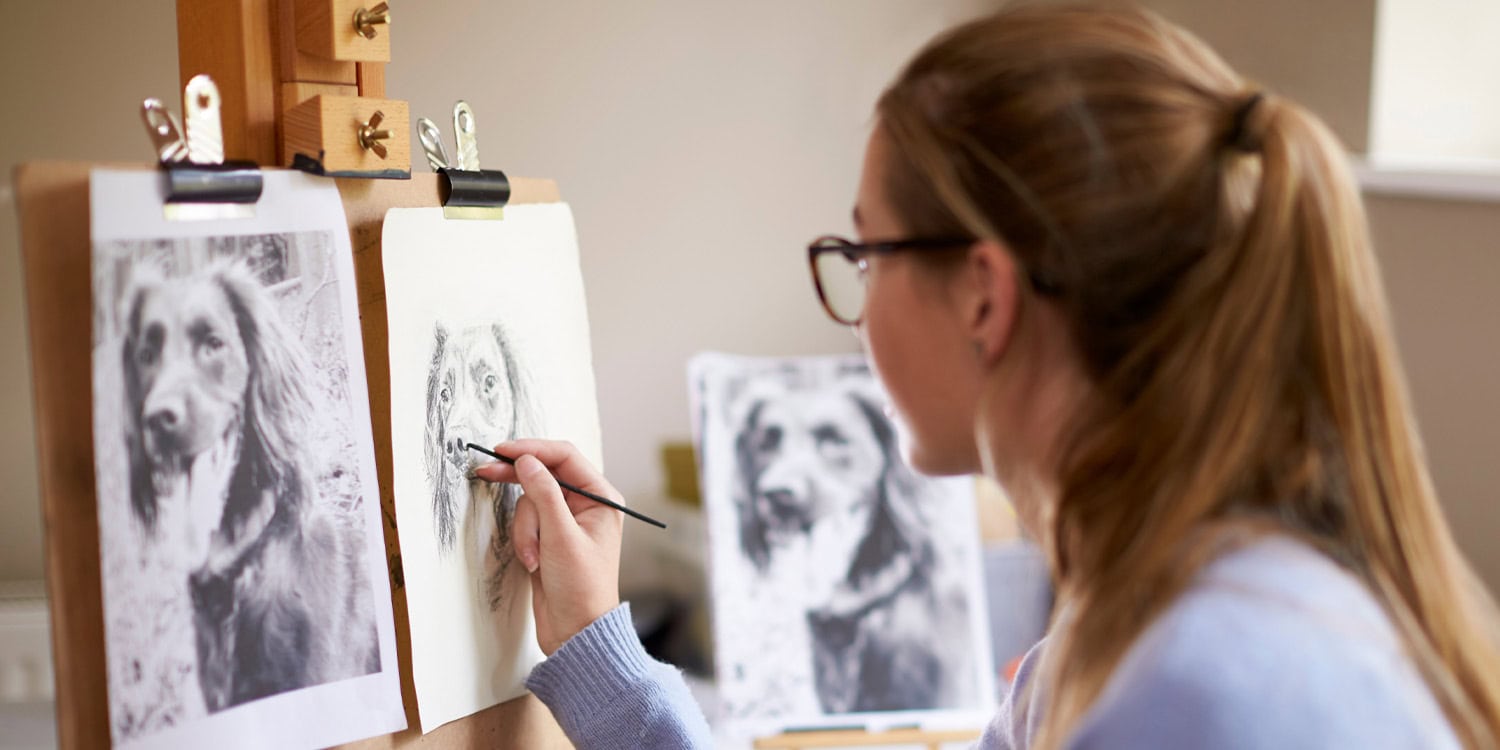Artists often captivate us with their ability to translate the world around them into stunningly realistic drawings. But what cognitive processes enable such skill? A recent study sheds light on this question, revealing that art students possess a unique flexibility in how they process visual information. They can switch between focusing on small details and grasping the overall structure of an object, but interestingly, they tend to start with a global perspective when beginning a drawing. These findings, published in the journal Psychology of Aesthetics, Creativity, and the Arts, suggest that artists have a perceptual edge that may explain their superior drawing abilities.
Creating a realistic drawing is more than just a creative endeavor; it’s a complex cognitive task that requires the artist to break down what they see into manageable parts while also maintaining an awareness of the overall structure. Previous research has indicated that artists might excel at this balance between local and global processing, but the specifics of how they manage this balance—particularly in comparison to non-artists—were not well understood. Additionally, some research suggested a possible overlap between the skills artists use and the cognitive traits associated with autism, where individuals often exhibit a strong focus on details at the expense of the broader picture.
Given these intriguing possibilities, the researchers sought to investigate several key questions: Do artists naturally gravitate toward focusing on details or the overall structure when they start a drawing? How do their skills in processing local versus global information compare to non-artists? And is there a relationship between these processing abilities and their drawing accuracy?
To explore these questions, the researchers recruited two groups of participants: 40 first-year art students from the Pratt Institute, a selective art and design school, and 41 non-art students from a large public university. The art students were selected based on their artistic skills and represented various design disciplines, while the non-art students had no formal art training.
Participants completed a series of tasks designed to measure their ability to process visual information both locally and globally. For local processing, tasks included the Mental Rotation Task, where participants had to determine whether pairs of objects were the same or different when rotated, and the Embedded Figures Test, which required finding a simple shape hidden within a complex pattern. Global processing was assessed using tasks like the Out-of-Focus Pictures Task, where participants had to identify blurry images, and the Coherent Form Task, which tested their ability to integrate scattered visual information into a recognizable shape.
In addition to these tasks, participants were asked to complete drawing tasks, including a still-life and a face drawing, which were rated for accuracy by non-artist judges. They also participated in a copying task, where they had to reproduce complex line drawings while researchers recorded the sequence of their marks to determine whether they started by focusing on the overall form (a global approach) or by detailing specific parts (a local approach).
The researchers found that art students outperformed non-art students on both local and global processing tasks, indicating a general cognitive advantage in visual information processing. Specifically, art students excelled at tasks that required them to break down complex visual information into its components (local processing) and those that required them to integrate fragmented information into a whole (global processing).
Interestingly, when it came to the copying task, both groups showed a preference for starting with global features, but this tendency was stronger among the art students. On the more complex Rey-Osterrieth Complex Figure task, which required participants to copy a detailed figure, art students were more likely than non-art students to begin by outlining the overall structure before filling in the details.
This preference for starting globally was also linked to higher accuracy in the drawing tasks. In other words, those who initially focused on the big picture tended to produce more accurate drawings, suggesting that global processing plays a critical role in realistic drawing.
The study provides new insights into the cognitive processes underlying artistic expertise, but it does have some limitations. The tasks used to assess local and global processing, though carefully chosen, may not capture all aspects of these complex cognitive abilities. Additionally, the study’s findings are based on first-year art students, so it is unclear whether the differences observed are a result of prior training or innate abilities. Future research could explore how these processing abilities develop over time and whether they can be trained or enhanced through education.
Another interesting finding was that art students did not report more autistic-related traits than non-art students, despite the hypothesis that attention to detail—a trait often associated with autism—might be more pronounced among artists. This suggests that while both artists and individuals with autism may excel in local processing, the underlying cognitive mechanisms might differ.
In future studies, it would be interesting to examine how artists and individuals with autism compare when performing tasks that require a balance between local and global processing, such as drawing from observation. Researchers could also investigate whether the global processing advantage observed in artists extends to other creative tasks or fields, such as design and architecture, and how these skills might be applied in STEM (science, technology, engineering, and mathematics) disciplines.
The study, “Artists Have Superior Local and Global Processing Abilities but Show a Preference for Initially Drawing Globally,” was authored by Jennifer E. Drake, Ariana Riccio, Rebecca Chamberlain, and Aaron Kozbelt.




